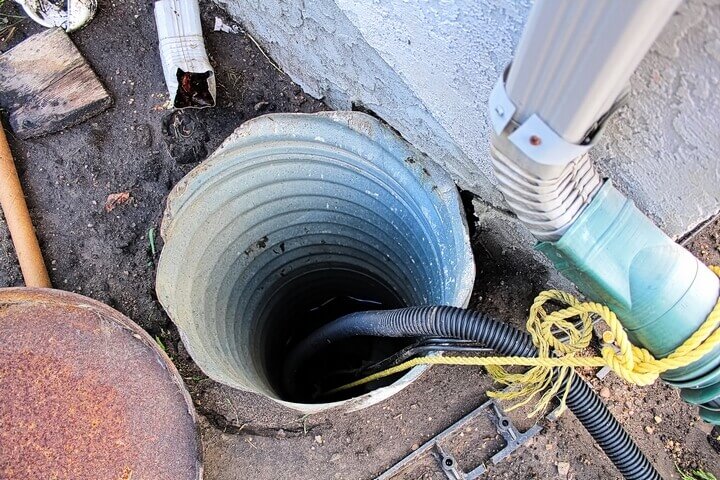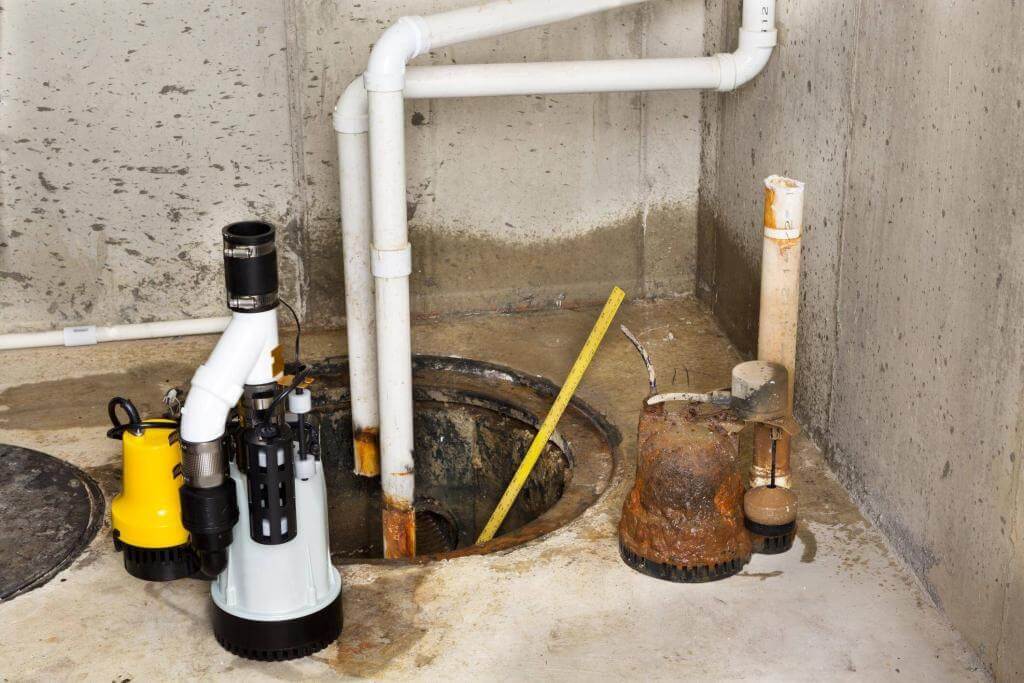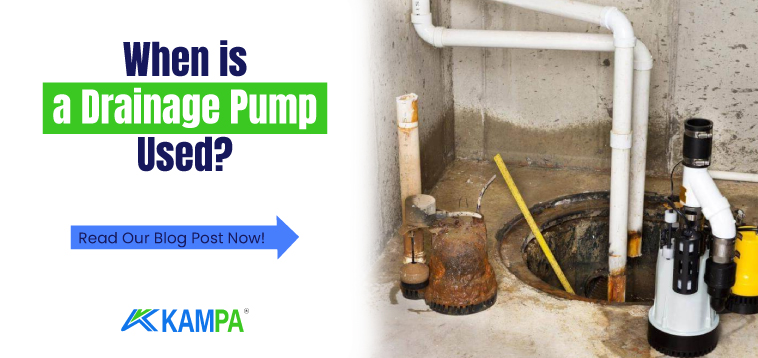When is a Drainage Pump Used?
Anyone who has had to deal with water damage knows what a nightmare it would be without a drainage pump. Even a small amount of water damage can cost thousands of pounds in damages.
Table of Contents
Basements, warehouses, garages, garages, elevator shafts and dwellings face a serious condition, especially with the increase in rainfall during the winter months. If you have certain areas that are prone to flooding, you may want to consider using a drainage submersible pump.
Drainage Pump Structure
A drainage pump is a very small pump designed to prevent flooding of an area by periodically removing water. A pit is dug at the lowest point of the area so that all the water entering the area drains into it.
This pit is called the sump. The sump pump is then installed in the sump or just above it so that water flows out of the house through the pipe. As the water flows into the drain, the water level rises until it activates the drain pump. It pumps all the water from the drain through the pipe, out of the house and is used to prevent the area from flooding.
Which Areas Need Drainage Pumps?
Obviously, you probably won’t install a drainage pump in your kitchen or living room. Most people would rather install it in their basement or any other crawl space they have.
It tends to be below ground level. It makes it more prone to flooding. It is ideal for protecting these areas from water damage unless a major flood occurs.
Drainage Pump Types

It can be found in different types. There are two different types of drainage pumps, float and floatless drainage pumps.
Float pumps are pumps that operate automatically. In other words, when water starts to accumulate in the drainage, as soon as it reaches the water level that needs to be drained, the pump is activated and starts to drain the water.
It is suitable for manual use without a floater. Works when connected to the power supply. Turns off when disconnected from the power supply.
Apart from these two types, there are 6 different types of drainage submersible pumps in terms of usage area.

Clean Water Drainage Pump
As the name suggests, they are pumps used in clean water discharge. It is used to evacuate rainwater puddles, mains water leaks. There are varieties made of plastic or stainless materials.
Dirty Water Drainage Pump
They are pumps used in muddy or mixed dirty water. It is generally used for the evacuation of flood water or for drawing water from areas such as lakes and rivers. Unlike clean water submersible pumps, there are strainers at the bottom where they suction.
Septic Submersible Pump
Pumps used in cesspools. These are pumps used to evacuate waste accumulated in sewage pits. When cesspools or sewage tanks are not drained by septic pumps, they can cause blockages.
Septic Submersible Pump with Blade
Septic pumps with blades. Especially for cesspools with solid particles, there is a blade inside the pumps to act as a grinder. Solid particles are discharged after being crushed.
Stainless Drainage Pump
Pumps used in the discharge of salty or chemical water. They are designed to be more durable and longer lasting by being produced from stainless materials.
Slurry Pumps with Agitator
These pumps, which are generally suitable for industrial use, are used in areas such as mines, heavy septic tanks, dam works, construction sites. It is designed to be used for discharging viscous water by reducing the liquid density thanks to the agitator on the pump shaft.
How to Choose a Drainage Pump?

- First make sure what kind of pump you need
- Measure how deepthe drainage pit is.
- Calculate how much area you will flood.
- Calculate how much liquid you will discharge per hour.
- Determine the type of electricity to be used.
- If you have materials such as discharge pipe suitable for the pump outlet, learn their diameters.
As a result of all this process, you will more or less have a pump preference in your mind. If I need to explain with a simple example;
- Let’s assume I’m going to buy one for the elevator shaft in our apartment building. I will use it to drain the rainwater puddle, so a clean water drainage pump will do the job.
- I am thinking of choosing a pump with a float switch as the apartment attendant will have difficulty in manually controlling the pump.
- There is a distance of 10 meters vertical and 10 meters horizontal between the elevator shaft and the discharge (10 meters horizontally corresponds to 1 meter vertically) I need a pump that presses 11 meters in total. (So 11 mss)
- The water accumulating in the elevator shaft will require me to drain 600 liters of water per hour (by making the necessary measurements). (It may be less than 1 m3/h)
- We use household single-phase electricity (220 V)
- We don’t have a pipe for drainage, we will take it in accordance with the pump.
You can choose a pump by comparing pump values with this information. Technical specifications of the pumps include head (mss), water flow rate (m3/h), electricity used (220V / 380V), outlet diameter .
Click here to buy a submersible drainage pump.
In this blog post, I tried to give general information about the drainage pump. I hope it was useful. You can specify your experiences and suggestions by commenting. If you are curious about other pump types, visit our pumps category. Click here for submersible pump types.

